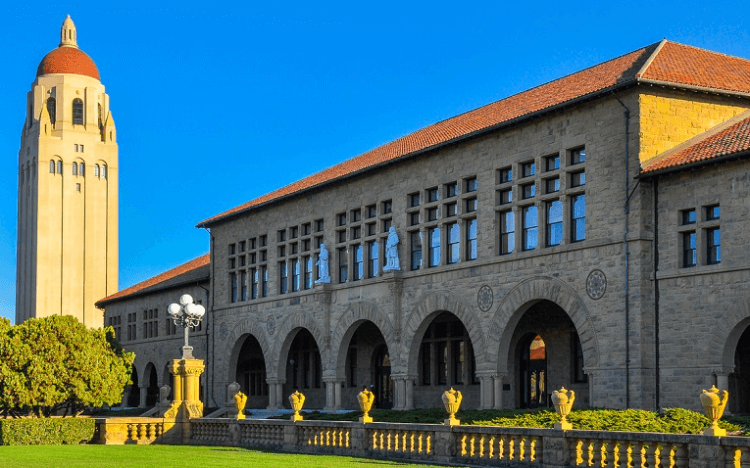While applications to US business schools have fallen recently—the US experienced a 10.5% fall in international applications across all program types in 2018—the country is still the most commonly-considered destination for prospective MBA students.
But what impact does where you study in the US have on your career development? And what do you need to take into consideration when choosing your school?
Here’s five questions to ask yourself. Answer these and they could help you find the right fit US business school.
1. How do you want to learn?
How you will be approaching your MBA needs to match the school’s approach too.
Talking to alumni and visiting campuses is a good way to understand the different learning atmospheres, as some will be more competitive than collaborative, and vice versa.
“There will be certain schools where you’re there because you got a certain GMAT score and the atmosphere is to prove yourself and one-up your peers,” says Jane Chynoweth (pictured below, right).
She’s a UCLA Anderson MBA class of 2015 alumnus who has been an in-house recruiter at Barclays Investment Bank, visiting top b-school campuses across the US, as well as an admissions officer at her alma mater. So, she knows what she’s talking about.
One of Jane’s favorite aspects of Anderson was that everyone helped everyone. “It was very important to the whole school that everybody was succeeding, not just individuals,” she explains.
If networking is your priority, choosing a school which emphasizes collaboration is a good way to go. Jane’s network greatly expanded due to the cooperative attitude of Anderson. She now lives in London, regularly seeing friends who she met via exchange programs with London Business School.
If you have your eye on a promotion, however, a more competitive environment at your business school could be advantageous in honing the necessary skills required to achieve it.
Jason Garner (pictured below, right), director of admissions at American University’s Kogod School of Business in Washington DC, says the industries most affiliated with the location can impact how competitive or collaborative a school is. Finance, for example, is renowned for being cut-throat so a school with a high number of graduates going into this industry could indicate the school’s learning approach.
“Saying this,” he adds, “I think all business schools are moving towards a more cooperative approach despite the fact that, by nature, MBAs are competitive.”
2. What’s your motivation?
Why do you want to study an MBA? Career switch? Promotion? Do want to expand your network and travel?
Each answer points you in a different direction when choosing your business school.
Jane pursued an MBA because she wanted to change career. “I knew Anderson had a really strong consulting pipeline [with] companies I was interested in, such as Deloitte,” she explains.
Researching different MBA programs, what they offer in terms of fulfilling your goals, and what you want to get out of studying, is crucial to picking your school.
Nica Langinger (pictured below, right), a full-time MBA student in the Class of 2020 at NYU Stern, is from LA and worked in California as a senior operations specialist before she headed East Coast for her MBA.
She’d considered her hometown b-school Anderson and her alma mater Stanford, both on the West Coast, but instead opted for Stern in New York. “It was important to me to experience something entirely new,” she asserts.
3. Where do you want to call home?
Studying a full-time MBA is a big commitment and it’s important to make sure you’ve really thought about where you’re going to be based for the program's duration.
Upping sticks and moving can be a great way to expand your network and broaden your horizons but it can also be difficult, especially if you have a family or a well-established life elsewhere.
Focusing on programs that are closer to home or where you want home to be is a good way to narrow down your search because it’s likely your MBA destination will be home for your post-MBA career as well.
Nica was certain she wanted to spend at least two years in Manhattan so she only applied to NYU Stern and Columbia Business School. “Stern appealed to me because of its prime location and commitment to fostering emotional quotient within its student body,” she says.
4. East Coast or West Coast?
To signpost the key differences between the coasts, we've chosen four well-ranked and well-established US schools to focus on; Stanford Graduate School of Business (Stanford GSB) and UCLA Anderson on the West Coast, and NYU Stern and MIT Sloan on the East Coast.
Looking at their most recent employment reports (2017/2018), it is important to note the greater margin of coastal change at MIT. As a school with prowess in technology, this could indicate that there are those wanting to move west to Silicon Valley and a buzzing tech startup scene.
But, overall, it’s clear that MBA students at these schools like to stay and develop their career where they studied.
“Because an MBA tends to be a terminal degree people aren’t looking to pursue more education after it,” Jason explains, “so where you go sets the tone for the rest of your career because it dictates where the strength of your network may lie.”
MBA degrees, in general, are a substantial financial investment. The US is renowned for being an expensive education destination. Most MBA programs are two-years in length. And the majority of post-grad management program's tuition cost more than $60,000 per year, increasing to in excess of $100,000 at some of the country’s most prestigious b-schools.
The below graph (with information taken from each school’s website regarding the cost of attendance) doesn’t appear to exhibit a drastic difference between each coast.
The west coast is known for having an expensive way of life with a high the cost of living is in places such as LA and San Francisco. Stanford has the highest cost of living out of the four at $95,112 for the two-year program duration. But the most expensive full-time MBA program by some margin is found at Boston’s MIT.
The information provided by each school was for one year and for the purposes of the graph the figure has been doubled to establish an estimate of total costs for the two-year, full-time MBA programs.
5. What industry do you want to work in?
There are a ton of business schools in the US, spread out across the country. Here though, we’ll continue the East Coast vs. West Coast theme.
Silicon Valley is a buzzword for the East Coast—Apple, Google and startup culture galore. Because of this, those with entrepreneurial ambitions may choose to study where that hub is on their doorstep.
Tech is a popular career destination at UCLA Anderson and Stanford but, in reality, many students at MIT Sloan and NYU Stern pursue careers in tech too (highlighted in yellow below).
MIT is, of course, renowned for its strength in tech innovation, and the East Coast is attracting more and more tech firms. Indeed, at the end of last year, Google announced its $1 billion expansion into a New York office to house its global business operations.
Wall Street, advertising agencies, Broadway, fashion week, and an ever-growing tech scene; it was the diversity of career opportunities on offer in New York which attracted Nica to NYU Stern. She’s recently joined Alexandria Ocasio-Cortez's congressional campaign as a field volunteer.
To select the right fit business school, figuring out your own motivation is key. Why do you want an MBA? What are you looking to achieve with it?
Ask yourself the above five questions to help set you on the right path.
Student Reviews
Kogod School of Business - American University
RECAPTHA :
f0
bd
2d
0f










